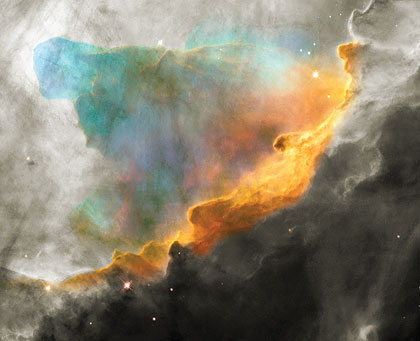
UC Davis researchers are unlocking the mysteries of the universe, including conducting research that determined the age of our solar system. In this image, a raging sea of glowing hydrogen gas lies within M17 (Swan Nebula), a hotbed of star formation about 5,500 light-years away in the constellation Sagittarius.
Photo: NASA, ESA and J. Hester (Arizona State University)
The origin of the solar system
UC Davis researchers have addressed some of the most complex scientific questions of our time—when and how did our solar system take shape and is there life on other planets—and found answers from geology, physics, cosmology and chemistry. For example, by analyzing a particular type of meteorite—a carbonaceous chondrite, which represents the oldest material left over from the formation of the solar system—UC Davis geologists set the most precise dates yet on the earliest stages in the birth of our solar system.
UC Davis geologists have also shown that Mars was covered in an ocean of molten rock for about 100 million years after the planet formed. Geologists are now diving to the depths of remote Canadian lakes and scouring the ancient surfaces of Death Valley and the Australian Outback to find clues to the history of life on Earth and to whether life could exist on Mars.
UC Davis chemists have developed new methods of using visible and ultraviolet spectroscopy to study the chemical composition of comets, which contain remnants—and therefore secrets—from the formation of our solar system.
The cosmology group has grown rapidly and is seeking answers from both observational and theoretical perspectives. By studying the universe and its properties, researchers are closer to answering the questions people have asked for centuries about space, time and our origins.
